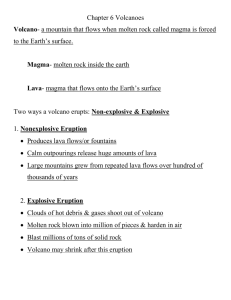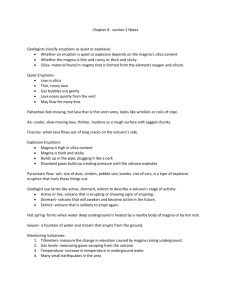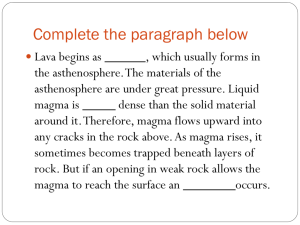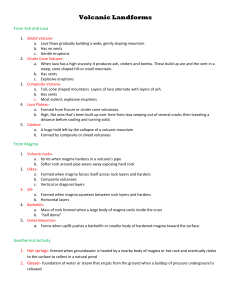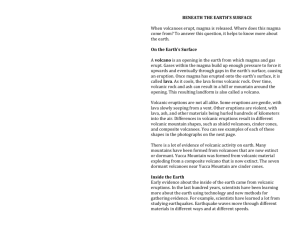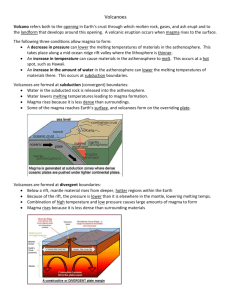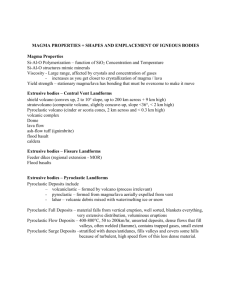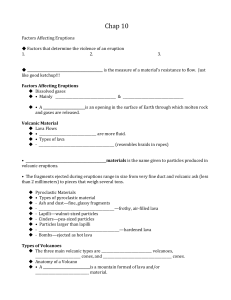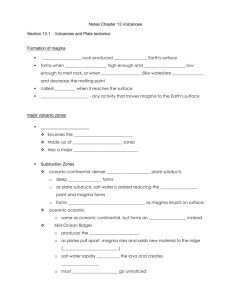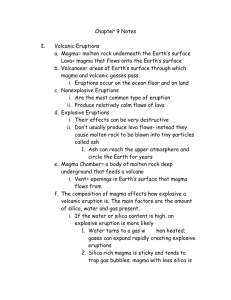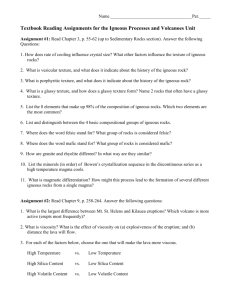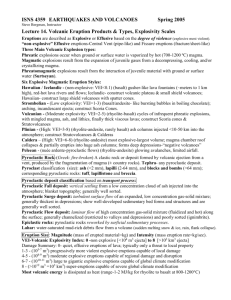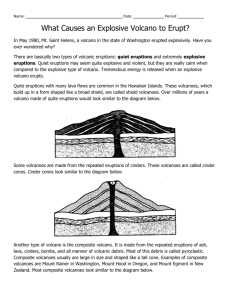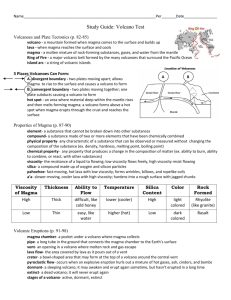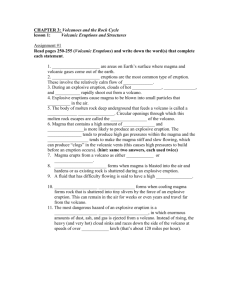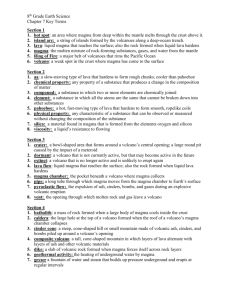Volcano - SchoolNotes
advertisement
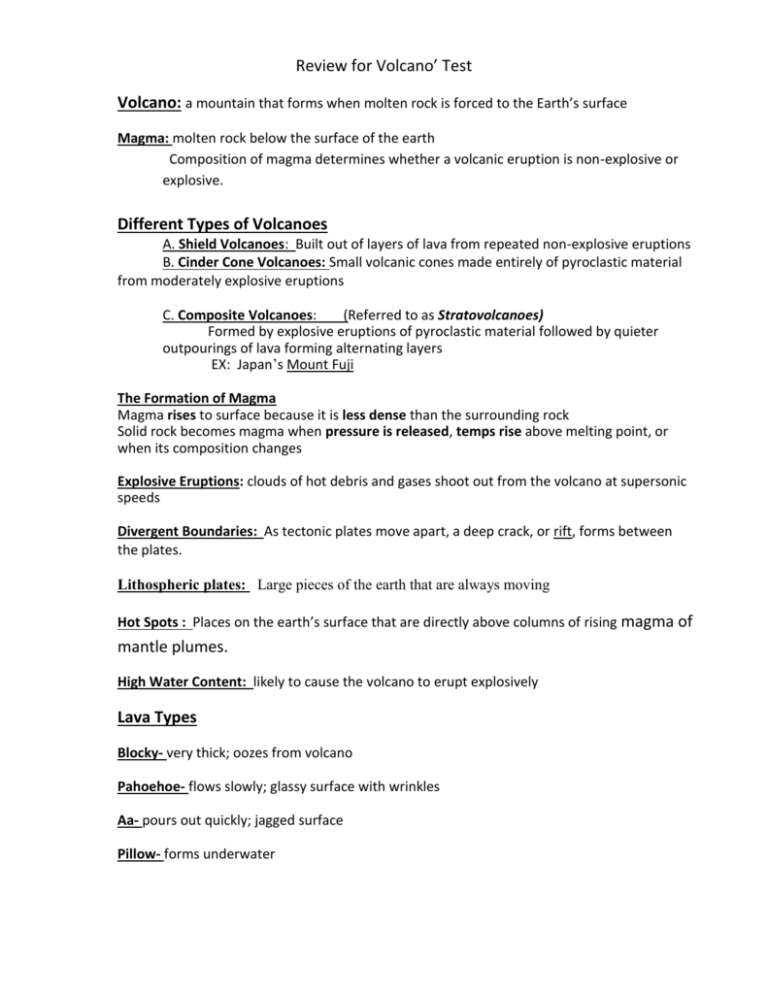
Review for Volcano’ Test Volcano: a mountain that forms when molten rock is forced to the Earth’s surface Magma: molten rock below the surface of the earth Composition of magma determines whether a volcanic eruption is non-explosive or explosive. Different Types of Volcanoes A. Shield Volcanoes: Built out of layers of lava from repeated non-explosive eruptions B. Cinder Cone Volcanoes: Small volcanic cones made entirely of pyroclastic material from moderately explosive eruptions C. Composite Volcanoes: (Referred to as Stratovolcanoes) Formed by explosive eruptions of pyroclastic material followed by quieter outpourings of lava forming alternating layers EX: Japan’s Mount Fuji The Formation of Magma Magma rises to surface because it is less dense than the surrounding rock Solid rock becomes magma when pressure is released, temps rise above melting point, or when its composition changes Explosive Eruptions: clouds of hot debris and gases shoot out from the volcano at supersonic speeds Divergent Boundaries: As tectonic plates move apart, a deep crack, or rift, forms between the plates. Lithospheric plates: Large pieces of the earth that are always moving Hot Spots : Places on the earth’s surface that are directly above columns of rising magma of mantle plumes. High Water Content: likely to cause the volcano to erupt explosively Lava Types Blocky- very thick; oozes from volcano Pahoehoe- flows slowly; glassy surface with wrinkles Aa- pours out quickly; jagged surface Pillow- forms underwater Pyroclastic Material: Produced when magma explodes from a volcano and solidifies in the air Pyroclastic Types Volcanic Blocks- largest type; consist of solid rock Volcanic Bombs- large blobs of magma that harden in the air Lapilli- pebble-like bits of magma that harden in the air Volcanic Ash- can stay suspended in the atmosphere for years; can fall to earth as a fine powder or get mixes with water from glaciers or rain. Average global surface temperatures can drop if the ash and gases spread around the globe blocking out sunlight. REVIEW OF EARTHQUAKES Waves: one or more of a series of movements passing along a surface or through a substance. Body Waves: Travel through the earth Earthquake: the shaking and vibration of the earth caused by large and sudden releases of energy Epicenter: The point on the earth’s surface that is directly above the focus






